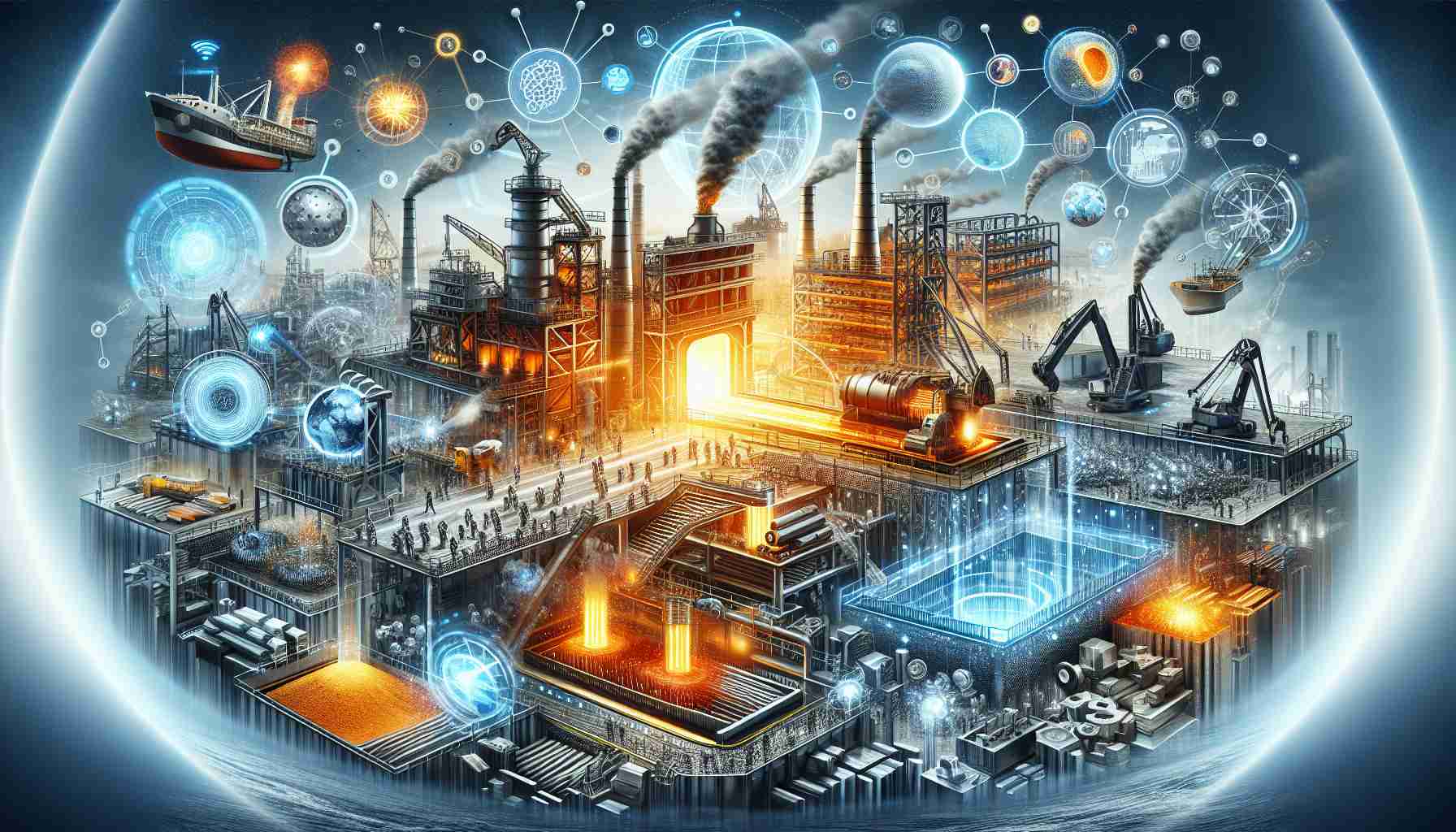Steel production undergoes a revolutionary transformation as metalworkers engage in a cutting-edge process that shuns traditional methods.
The previous narrative unfolds a storm of activity as scrap steel is meticulously melted to create liquid metal through the use of high-voltage electric currents. Once the steel is molten, it is shaped into rods that serve to reinforce structures from iconic buildings to vital infrastructure projects.
A pivotal shift is seen as steel giants Tata Steel and British Steel set their sights on transitioning from outdated blast furnaces to the more environmentally friendly electric arc furnace technology. Though this move may result in job losses, it signals a significant leap towards reducing emissions in the UK’s steel industry.
The government steps in, offering substantial subsidies and investments to ensure the success of this eco-conscious transition. Plans for new facilities, such as a plate mill for wind turbine components, aim to secure jobs while promoting sustainability.
The focus on offshore wind presents a compelling opportunity for steel manufacturers, hinting at a promising future within the renewable energy sector. This shift underscores the industry’s willingness to adapt and innovate in response to environmental challenges.
The steel industry’s embrace of lower-carbon steel production methods highlights a progressive approach towards reducing its environmental impact. With ongoing discussions and negotiations, the future of steel production in the UK appears poised for a transformative and sustainable direction.
The Evolution of Steel Production: Exploring Uncharted Terrain
The journey of innovation within the steel industry takes another bold stride as companies delve deeper into uncharted territory, exploring cutting-edge technologies and methodologies. While the previous article highlighted the transition from blast furnaces to electric arc furnaces, there are additional fascinating developments capturing the industry’s attention.
Key Questions:
1. What new technologies are disrupting traditional steel production methods?
2. What are the impacts of these transformations on the workforce and job market?
3. How are stakeholders addressing the challenges of sustainability and emissions reduction in steel production?
New Revelations and Challenges:
Amidst the waves of change, the integration of artificial intelligence and automation into steel production processes is gaining traction. These advancements promise increased efficiency, precision, and the potential for further reducing environmental footprints. However, they also raise concerns about workforce displacement and the need for upskilling.
As steel manufacturers pivot towards more sustainable practices, they face the ongoing challenge of balancing cost-effectiveness with environmental responsibility. The transition to electric arc furnaces and the adoption of renewable energy sources come with significant initial investments and operational adjustments, posing financial strains for some companies.
Advantages and Disadvantages:
Advantages:
– Reduced carbon emissions and environmental impact.
– Enhanced efficiency and product quality through advanced technologies.
– Opportunities for diversification into new markets such as renewable energy.
Disadvantages:
– Potential job losses due to automation and restructuring.
– Initial high costs of transitioning to eco-friendly production methods.
– Regulatory uncertainties and market fluctuations affecting profitability.
Despite the challenges, the steel industry’s perseverance in embracing innovation and sustainability points towards a promising future. By addressing these hurdles head-on, stakeholders can pave the way for a more resilient and competitive sector.
For further insights on the evolving landscape of steel production and sustainable practices, visit SteelInstitute.com. Explore the latest industry trends, research, and initiatives shaping the future of steel manufacturing.
